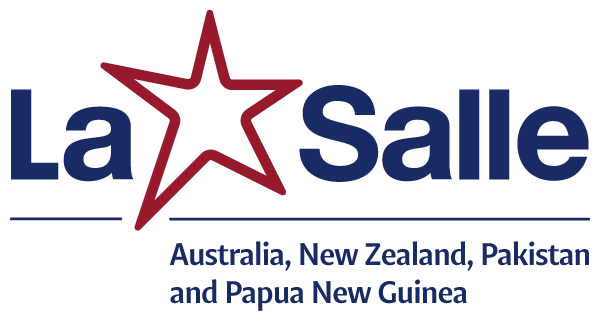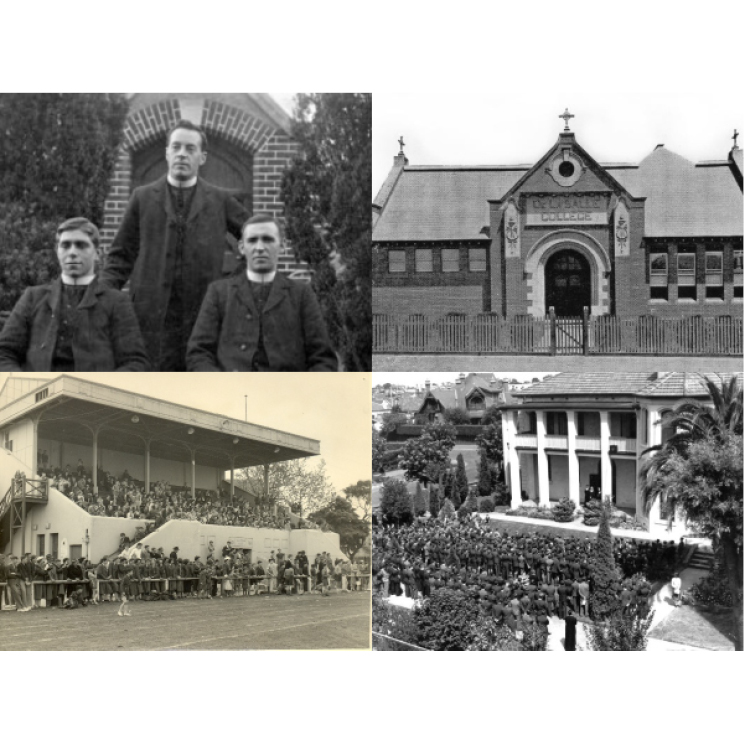The rush to Teach: De La Salle Malvern’s Foundation 1912 – February 5
Who would want to leave home on Christmas Day, travel for six weeks on a 1900’s steamship, and start teaching the day after arrival? That was the story of the three Irishmen taking up their ministry of the first school of the Brothers in Victoria, on February 5 1912.
The new Vincentian Fathers’ parish primary school, promised but not ready for learning, began in the parish hall with 54 local boys*, sons largely of, tradesmen, labourers and small shopkeepers. Brothers Dunstan Drumm (Director/Principal), Leopold Loughran and a young Jerome Foley (later Provincial 1946-56) taught there for three months, until their new school was ready in Stanhope Street West. It adjoined their provided house, and the local tram sheds.
The three pioneers were skilled and young teachers – fully trained and qualified, with the experience of several years in the classroom in Ireland. Dunstan was 32, Leopold 34, and Jerome 26. Thus, by the end of 1913, a number of boys in Grade 8 sat for the Merit Certificate, three securing passes. (At the time Gr. 8 was effectively the end of schooling for most, before work).
The ‘House History’ of the Brothers noted that “the pastor (Fr. Simon Hegarty, CM) was keen on establishing a secondary department, and to that end paid the expenses of one of the Brothers (Jerome) to attend the university”. (Secondary teaching began in 1918).
* The first dilapidated Register can decipher only 37 boys beginning on “6.2.12”, but new students were appearing there regularly over the next 18 months.
STRUGGLE YEARS
The first two decades were certainly an uphill climb for the school, and for the new Lasallian Province. Other male religious teaching orders were already well established, and were offered the administration of schools more easily. Unhappily, the Provincial (from 1911) - Br. Paul Phelan – was not a believer in secondary education: Jerome, on completion of his degree in later years, was promptly appointed elsewhere. In addition, Paul’s lack of organizational skills, and lack of support of his principal Brothers, boded badly for the future.
The strong tradition of the Institute to not teach Latin (and hence tempt Brothers into the clerical state) became a major roadblock. The College of Armidale (1906-) and the fledgling Malvern needed Latin-teaching to attract better students, in the hope of university qualification (a pre-requisite), and to establish reputations as flourishing secondary colleges. Additionally, to attract young men to Catholic seminaries and the priesthood, parish priests wanted Latin taught. (Requests to Rome finally resulted in papal decreeing that De La Salle institutions could teach Latin- in 1924).
WHERE TO NOW?
After 110 years of service to Catholic education, the Brothers’ Institute has decided to relinquish ownership of De La Salle, handing over to Melbourne Archdiocese Catholic Schools. It will take over the running of the College for more than 1000 boys in years 5 to 12 from 2023. The latter said, in The Age that “There will be no change to staff, educational approach or fees”.
The Brothers stated: “This comes as the [De La Salle] Brothers have been proactively considering their future obligations as an order, including caring for a number of ageing brothers, continuing their mission abroad, and their determination to ensure financial restitution for victims of historic abuse.
“Our dedication to the rest of the schools in the Lasallian network remains unchanged,” they said. (The Age, 1.9.22). The tradition forges on!
References:
-
Carmody, Aloysius, FSC: The De La Salle Brothers in Australia (1956)
-
De La Salle Brothers ANZPPNG: Archives – Castle Hill
-
Donovan, Peter: For Youth and the Poor: the De La Salle Brothers 1906-2000 (2001)
-
The Age (newspaper) 1.9.22 (accessed 27.1.23)
(Author: Br Garry Wilson, District Creative Writer)
- Log in to post comments

